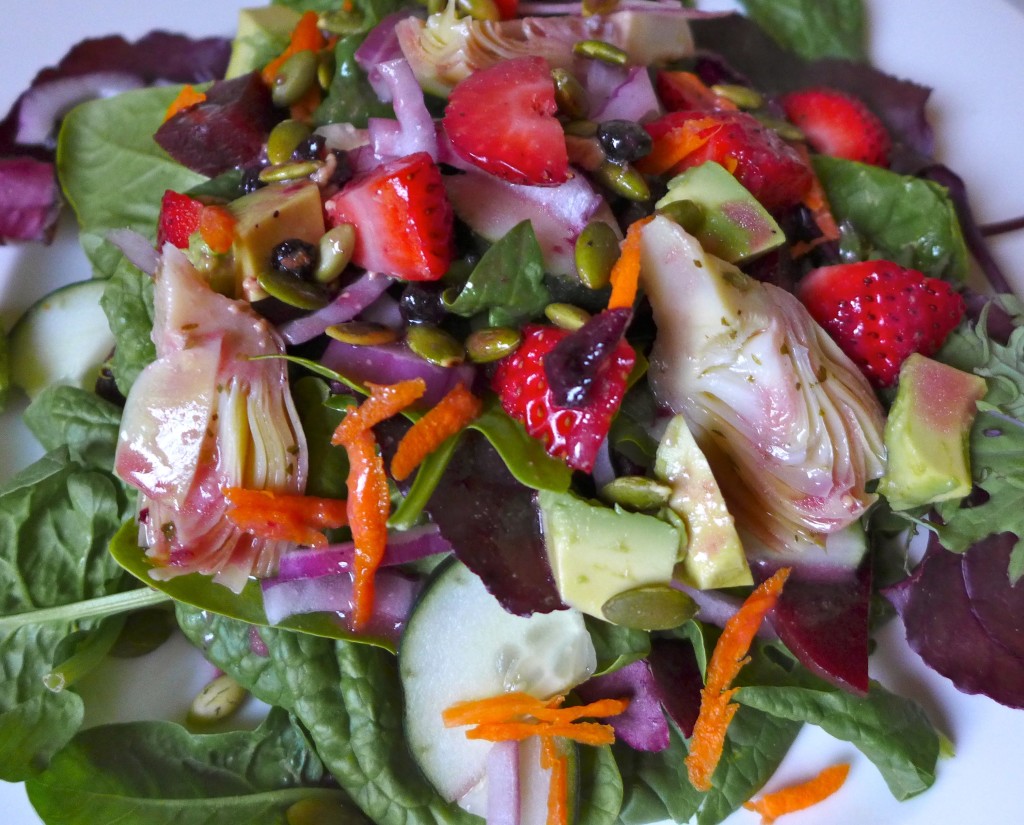We originally published this salad recipe four years ago. We’re republishing it today as this is the start of Pollinator Week 2019!
There are many ways to celebrate and show our appreciation for the hard-working pollinators that help to keep nature in balance and play a key role in providing 75% of the food we eat.
- plant a pollinator garden
- stop using pesticides on your lawn
- buy organic produce (to reduce large-scale pesticide and herbicide use)
- encourage your neighborhood to become Pollinator/Bee Safe
If you’d like to learn more fun-facts about pollinators (and see an awesome video of a nectar-drinking bee-fly!), click here.
~
Today we have a recipe for a salad that is jam-packed with good ingredients, and every single one, from the mustard in the dressing to the pumpkin seeds, required pollination to help them grow and reproduce. As you’ll see, the salad looks absolutely beautiful and represents everything that is good about summer. But before you dig in, say thanks to every pollinator that played a role in bringing this food to your table.

As we mentioned on Monday, about 75% of the food we eat required pollinators to grow and produce seeds. That seems like a lot, but when you look at this salad, it’s so easy to see how that’s possible. In making this salad, I used information from this USDA document to determine which foods required pollination. As you’ll see, I got a bit creative with this salad, but if you have a family of cautious eaters, you can look at Table 1 in that document and find ingredients that suit your household. For example, I didn’t even put tomatoes, which are such a common salad ingredient, in this dish, but they are on the list!
Continue reading …




